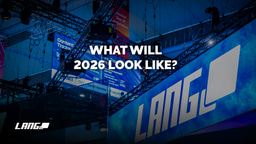Creating the Next Generation AV Workforce: From Audio Engineers to Solution Designers


If you're considering digital signage for your business or organization, you may be surprised at the options available. They've come a long way from the basic rectangular flatscreens seen inside and outside of retail outlets, malls, transportation hubs, and other places large numbers of people gather. One of the many technologies opted for now are various types of transparent displays - screens with bright graphics that let you see through them! Usually, they're installed behind glass to create an impressive facade with bright content visible at a distance and are 70-95% transparent.
Like traditional displays, transparent displays can play any media, from photos to video. However, in contrast to regular displays and conventional static signage, transparent displays do not block light, so when they're utilized in storefront windows, customers can see from inside the store to the outside and vice versa, creating a visually intriguing advertising space.
But how do they work? Well, in the case of transparent OLED, the Organic Light Emitting Diodes themselves emit light when turned on and don’t require a separate light source. This means that when they are turned off i.e. displaying black content, the pixels are transparent, and this allows light to pass through the display.
And while traditional direct-view LED displays have wowed viewers for years, they've often suffered from the same criticism static billboards have - obstructing scenic views. City planners are aware of these challenges and have enacted stricter rules for their use. However, the use of transparent direct-view LED displays helps solve that issue and maximize the aesthetic value of cities. In this case, the LEDs or Light Emitting Diodes also emit light when turned on. However, in this case, there is no special technology involved since light simply filters through the gaps between pixels.
Transparent direct-view LEDs are typically used for outdoor applications since their pixel pitch is larger than most interior applications. Due to its low brightness, it is also best suited for mounting on the exterior of buildings that will display content best at night. Natural light can filter through them while delivering bright, attention-grabbing content. Their ultra-thin, steel-free, easy installation, maintenance, and high transparency make transparent direct-view LED a great addition to popular high-end commercial developments. They have been gaining favor in cities worldwide.
We are the community for the creative professionals who use technology to create integrated experiences.
AVIXA is the Audiovisual and Integrated Experience Association, producer of InfoComm trade shows around the world, co-owner of Integrated Systems Europe, and the international trade association representing the audiovisual industry.


We and selected partners, use cookies or similar technologies as specified in the cookie policy and privacy policy.
You can consent to the use of such technologies by closing this notice.
Please sign in or register for FREE
If you are a registered user on AVIXA Xchange, please sign in